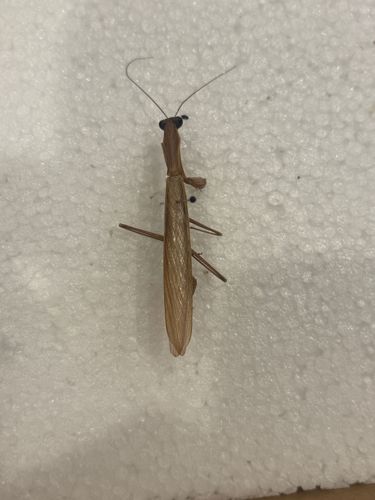Praying Mantis (likely a European Mantis or a Stagmomantis species)
Scientific Name: Mantodea (specific species not definitively identifiable from image, but commonly encountered species include Mantis religiosa or Stagmomantis carolina)
Order & Family: Order: Mantodea, Family: Mantidae
Size: Typically ranges from 2 to 6 inches (5 to 15 cm) in length, depending on the species.

Natural Habitat
Found in various habitats, including gardens, meadows, grasslands, and areas with tall vegetation, shrubs, and trees. They prefer warm climates.
Diet & Feeding
Insects and other small invertebrates, such as flies, crickets, butterflies, moths, grasshoppers. Larger mantises may prey on small vertebrates like lizards, frogs, small birds, or rodents.
Behavior Patterns
Mantises are predatory insects known for their distinctive "praying" posture, which involves holding their spiny forelegs folded in front of their head. They are ambush predators, remaining motionless and camouflaged, waiting for prey to come within striking distance. They have excellent eyesight and a very quick strike. They are solitary creatures. Sexual cannibalism is common, where the female often consumes the male during or after mating.
Risks & Benefits
Benefits: They are biological pest control agents, preying on many garden pests, making them beneficial to agriculture and gardening. Risks: Generally harmless to humans. They do not bite or sting, though a large mantis might give a pinch if handled carelessly. They are not poisonous or venomous.
Identified on: 9/19/2025